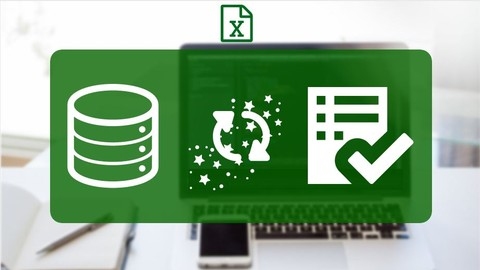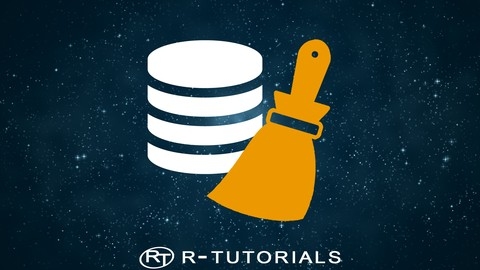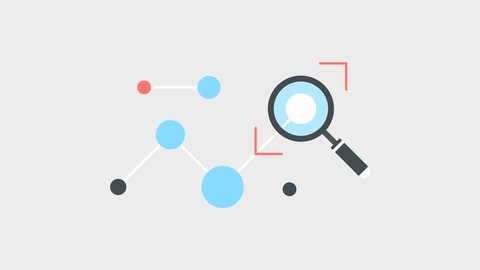Data cleaning is a critical process in any data-driven field, ensuring your data is accurate, consistent, and reliable for analysis and decision-making.
Whether you’re a data analyst, scientist, or business professional, mastering data cleaning techniques is essential for extracting meaningful insights and driving informed actions.
From handling missing values and inconsistencies to transforming data into a usable format, data cleaning forms the foundation for effective data analysis.
By learning these skills, you’ll be able to unlock the true potential of your data and make better-informed decisions.
Finding the right data cleaning course on Udemy can be challenging, with a vast array of options catering to different skill levels and specific software applications.
You want a course that not only covers the theoretical concepts but also provides hands-on practice with real-world examples, equipping you with the practical skills you need to tackle data cleaning tasks effectively.
Based on our extensive review of Udemy’s offerings, we’ve identified Excel: Data cleaning and analysis techniques as the best overall course for data cleaning.
This course provides a comprehensive introduction to data cleaning in Excel, focusing on practical skills and real-world applications.
You’ll learn how to use a variety of powerful functions to manipulate and clean textual data, handle errors, and create customized cleaning rules.
It’s an excellent starting point for anyone looking to master the fundamentals of data cleaning in a widely accessible and user-friendly environment.
However, if you’re looking for courses specializing in other tools like Python, R, or Tableau Prep, or those that delve deeper into specific data cleaning challenges, we have a range of other recommendations to suit your needs.
Keep reading to explore our curated list of the best data cleaning courses on Udemy, tailored to different skill levels and learning preferences.
Excel: Data cleaning and analysis techniques
This course is a solid introduction to data cleaning in Excel, focusing on practical skills that you can use immediately.
You’ll learn to wield a variety of powerful functions, including LEN, FIND, MID, and CONCATENATE, to manipulate and clean textual data.
The course then progresses to more advanced techniques, demonstrating how to use TRIM to remove unwanted spaces and LEFT and MID to extract specific parts of text.
The instruction goes beyond theory, using real-world examples to show how these functions are applied.
You’ll learn to locate specific text using SEARCH and handle errors gracefully with IFERROR.
You’ll also master the IF function to create customized data cleaning rules based on specific criteria.
Each section is followed by practice exercises, allowing you to solidify your understanding.
And you can always refer to the included solutions to work through any challenges.
The course is designed for learners with a basic understanding of Excel, making it accessible to a wide audience.
While the content is comprehensive, it might benefit from more detailed explanations of how to apply these techniques in specific business scenarios.
Python Data Science: Data Prep & EDA with Python
This course equips you with the essential skills for data cleaning and exploratory data analysis (EDA) using Python.
You’ll start by understanding the fundamentals of data science, including the common machine learning algorithms and the essential steps in the data science workflow.
The course then dives into the core of data preparation and EDA, guiding you through the process of gathering data from various sources, including flat files, Excel spreadsheets, and SQL databases.
You’ll learn to wield the power of Pandas, a versatile Python library, for data cleaning tasks.
You’ll master the art of addressing data inconsistencies, including missing values, inconsistent text, duplicate entries, and outliers.
The course provides a comprehensive framework for dealing with these issues, covering methods like converting data types, imputing missing values, removing duplicates, and creating new columns.
Beyond data cleaning, you’ll delve into the world of EDA.
You’ll leverage the capabilities of Pandas to filter, sort, and group your data.
You’ll become proficient in data visualization techniques, creating insightful charts using Pandas and other tools to unveil patterns hidden within your data.
These include scatter plots, histograms, and pair plots, which will allow you to extract valuable insights from your data.
The course emphasizes practical application through hands-on exercises, a mid-course project, and a final project.
These projects provide a valuable platform for you to solidify your knowledge and gain real-world experience in data cleaning and EDA.
This comprehensive approach ensures you’ll emerge from the course with a solid grasp of data cleaning and exploration, ready to tackle more complex data science challenges.
Best Excel Course: Data Cleaning - For further Data Analysis
You’ll embark on a journey starting with the fundamentals of data cleaning in Excel, gradually progressing to more advanced techniques.
The course begins by introducing you to the “Go To Special” function, a powerful tool for efficiently selecting specific cell types, such as those containing errors or blank spaces.
You’ll then delve into essential text formulas like TRIM, which efficiently removes unwanted spaces from your data, and VALUE(), which transforms text resembling numbers into actual numerical values.
The course also explores the LEN() function, enabling you to determine the length of text strings, and RIGHT(), LEFT(), and MID() functions for extracting specific text segments.
Moving on, you’ll discover the effectiveness of Find & Replace for data cleanup, including the use of wildcard characters to locate and replace multiple occurrences of text patterns.
The course provides a detailed explanation of Text to Columns, a technique for splitting data within cells into separate columns, particularly helpful for cleaning up dates, numbers with leading or trailing characters, and more.
The course also introduces advanced concepts like Flash Fill, which automatically completes series of values based on identified patterns, and Power Query, a tool providing powerful data transformation capabilities.
Master Course in Tableau Prep - Prepare & Clean Data
The course covers the full spectrum of Tableau Prep capabilities, starting with the basics of installation and interface navigation, then guiding you through connecting to various data sources.
You’ll learn the core principles of data preparation, including how to cleanse data, replace values, and create new fields.
The course goes beyond the basics, delving into essential data preparation tasks like pivoting data, aggregating values, joining datasets, and creating calculated fields.
These skills are essential for shaping your data into a form suitable for analysis and visualization.
You’ll practice these skills with hands-on projects that allow you to apply your knowledge in a real-world setting.
The course concludes with a valuable section on using Tableau Prep in a business context, showcasing how these tools can be leveraged for practical business decision-making.
This approach ensures you’ll graduate with a comprehensive understanding of how data preparation fits into the broader landscape of data analysis.
Cleaning Data In R with Tidyverse and Data.table
The course starts with an introduction that highlights the importance of clean and tidy data for successful analysis, and why R is an excellent choice for data cleaning tasks.
You will learn how to easily import data into R and explore the best table types available, like data frames and tibbles.
The course then dives into handling missing values and detecting outliers, covering both simple methods and machine learning techniques for imputing missing data.
It also teaches you how to identify statistical outliers in univariate and multivariate datasets.
A significant portion of the course is dedicated to the Tidyverse, a powerful collection of R packages designed for data manipulation and visualization.
You’ll understand what the Tidyverse is and how to use its key features, such as the pipe operator and the underlying principles of tidy data.
The course covers essential tasks like changing table formats, splitting columns, converting between long and wide formats, and performing string manipulations with the stringr package.
Another important aspect is learning about query systems in R, including dplyr for data manipulation and data.table for efficient data operations.
You’ll learn how to subset, filter, and query data using these tools, which are essential skills for data cleaning and analysis.
To solidify your learning, the course includes a real-world course project where you’ll apply the techniques you’ve learned to clean and analyze a dataset.
Step-by-step solutions are provided, guiding you through data import, cleaning, and querying processes.
Intro to Trifacta: Clean Your Data Quickly and Easily
This “Intro to Trifacta” course is a hands-on guide to data cleaning, focusing on using Trifacta to quickly and efficiently organize your data.
The syllabus clearly outlines a practical learning path, starting with the basics of Trifacta and its interface.
You’ll learn to upload datasets, build data flows, and explore the grid panel for visualizing your data.
The course emphasizes using pre-built recipes and making quick adjustments, which is a valuable time-saving technique for data cleaning.
Beyond the basics, you’ll delve into working with text and strings, learning to tackle common inconsistencies and use patterns to transform data.
You’ll gain proficiency in essential data manipulation techniques like splitting, merging, and left-aligning data, as well as using escape characters, “if” functions, and “find” functions to extract and manipulate data.
The syllabus also includes a section on data filtering, where you’ll explore deduplication, column removal, and using functions like “isnull,” “ismissing,” “ismismatched,” and “isvalid” to identify data issues.
You’ll also learn to use comparison operators, logical operators, and the “in” function to filter data based on specific criteria.
The course’s structure is well-defined, leading you through a series of practical exercises and concepts, ultimately equipping you with the skills to effectively clean your data using Trifacta.
Power BI - Get & Transform data mastery in data cleaning
This syllabus lays out a comprehensive path to mastering data cleaning in Power BI.
You’ll start by getting acquainted with Power BI and Query Editor, learning to import data from various sources like Excel, text files, and Access databases.
You’ll discover how to load data into the data model and understand file path changes.
The course then dives into the powerful world of data transformation, equipping you with the skills to manipulate text, numbers, and dates.
You’ll learn to create conditional columns, work with multiple data sources, and master the power of append, duplicate, and reference queries.
You’ll progress to merging queries and different types of joins, including left, right, outer, and anti joins.
You’ll even learn to create cross joins using other functions.
Building blocks for M language are introduced, covering text functions, date functions, conditional functions like IF, AND, OR, and the powerful “Column from example” technique.
The course is packed with practical case studies to solidify your understanding.
You’ll tackle real-world scenarios involving financial statements, payroll data, and invoice data.
You’ll learn to transform stacked data into columnar data, use multiple filters on single columns, and even create dynamic calendar tables.
For example, you’ll learn how to extract relevant data from complex financial reports or analyze payroll data to identify potential errors.
Finally, you’ll explore the world of Power Query Objects, understanding how Lists, Records, and Tables function as objects in Power Query.
You’ll be equipped to tackle advanced case studies, including extracting relevant data and calculating individual sales as a percentage of total sales.
For example, you’ll learn to analyze sales data to identify trends and insights.
This course includes a bonus lecture to top it all off, ensuring you leave with the knowledge and skills needed to become a data cleaning expert in Power BI.
Data Quality & Profiling with ETL Pentaho DI & DataCleaner
You’ll delve into the world of Pentaho Data Integration (PDI) and DataCleaner, learning how to use these powerful tools to ensure your data is accurate, complete, and consistent.
The curriculum starts with the fundamentals, defining key data quality dimensions like completeness, conformity, referential integrity, and validity.
You’ll understand how these concepts translate into real-world scenarios through hands-on demonstrations.
For example, you’ll learn to identify and handle incomplete customer records or standardize inconsistent date formats.
You’ll then dive into the practical applications of PDI and DataCleaner, gaining experience with configuring data sources, designing and executing DataCleaner jobs, and leveraging command line options for scheduling and automation.
You’ll also explore data profiling techniques, analyzing your data for duplicates, and learn how to integrate DataCleaner jobs seamlessly with PDI for a holistic data cleaning workflow.
This course is designed to equip you with the skills and knowledge necessary to build and implement robust data quality solutions.
You’ll walk away with a solid understanding of industry best practices and the confidence to tackle even the most complex data cleaning challenges.








